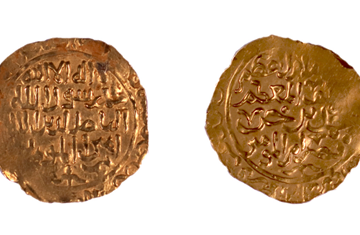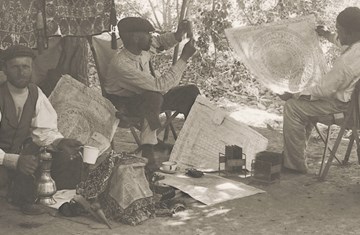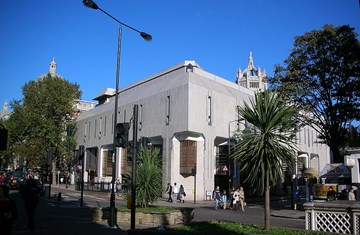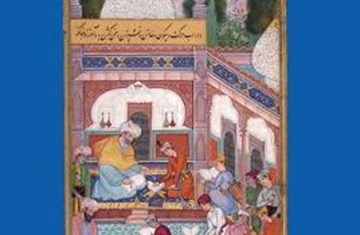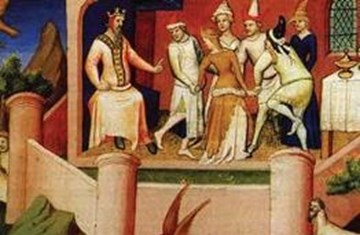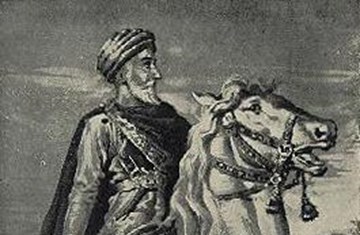Declaration of the Qiyama
Already in the time of Muhammad b. Buzurg -Umid (532-57 AH/1138-62 CE), Imam Hasan II had acquired followers who regarded him as the Imam promised by Hasan al-Sabbah, the first ruler of Alamut. Left without a manifest Imam since Imam Nizar b. al-Mustansir’s death in 488 AH/1095 CE, the Nizaris had acknowledged Muhammad b. Buzurg-Umid and his predecessors at Alamut merely as da‘is and hujjas, or chief representatives, of their hidden Imams.
The most important event of Imam Hasan II’s brief reign was his declaration of the qiyama (the Resurrection), which initiated a new phase in the history of the Nizaris of the Alamut period (483-654 AH/1090-1256 CE). After making careful preparations, in a solemn ceremony at Alamut on 17 Ramadan 559 AH/ 8 August 1164 CE, in the presence of representatives from different Nizari territories who had been summoned there, Imam Hasan II delivered a khutba and passed on new instructions from the Nizari Imam; according to these instructions the Nizaris had now been brought to the qiyama—the Resurrection was upon them. Soon afterwards, on 28 Dhu’l-qi‘da 559 AH/ 18 October 1164 CE, a similar ceremony was held at the castle of Mu’min-Abad to the east of Birjand, the local headquarters of the Nizaris in Quhistan. On that occasion Imam Hasan II’s new declarations were read out to the representatives of the Nizaris of that region by Ra’is Muzaffar, the muhtasham, or chief, of the Quhistani Nizaris. The ruler of Alamut had now also announced that, just as previously the Fatimid Imam al-Mustansir had been God’s khalifa on earth, so now Imam Hasan II himself was that khalifa. In other words, Imam Hasan II had now also claimed the Nizari Imamate for himself, at least implicitly. Subsequently, Imam Hasan II in his epistles (fusul) implied more clearly that he was the Imam, the son of an Imam from the progeny of Imam Nizar b. al- Mustansir, even though he had been considered to be the son of Muhammad b. Buzurg-Umid. The contemporary Nizaris accepted this claim, which was reiterated more explicitly by Imam Hasan II’s son and successor Imam Nur al-Din Muhammad. It fell to Rashid al-Din Sinan (d. 589 AH/ 1193 CE), the most famous of the Nizari da‘is in Syria and the original “Old Man of the Mountain” of the Crusaders, to declare the qiyama to the Syrian Nizaris soon after 559 AH/ 1164 CE.
The Last Day announcement
By declaring the qiyama, Imam Hasan II had in effect announced the Last Day, which was eventually interpreted to mean the manifestation of the unveiled truth (haqiqa) that had hitherto been hidden in the batin or esoteric dimension of the Islamic message.
This was made manifest in the person of the Nizari Imam, who, as the enunciator of the qiyama, the “qa’im al-qiyama,” held a rank even higher than that of an ordinary Imam. As a result, the members of the Nizari community who acknowledged the Nizari Imam were now capable of understanding the true esoteric meaning of the religious laws, and as such, Paradise was actualised for them in this world.
Joveyni, Rashid al-Din, and Kashani, who are the main authorities on the history of the Persian Nizari state, relate that, in line with the circumstances expected in the qiyama, the final eschatological dawr (era of human history), Imam Hasan II also announced the abrogation of [blind observance of] the shari‘a, which had been enforced rigorously by his predecessors at Alamut.
Hasan II's death and succession
In view of the absence of contemporary Nizari sources from the qiyama times and the negative bias of the non-Isma‘ili sources on the subject, it is difficult to know for certain how the declaration of the qiyama was actually perceived by the Nizaris, who continued to regard themselves as Ismaili Shi‘i.
At any rate, Joveyni and other anti-Ismaili authorities, despite their hostile stances, do not report any instances of libertine and permissivist behavior amongst the Persian Nizaris immediately after the qiyama, even though the Nizari leadership had now begun to stress the spiritual inner-interpretation of the law in preference to the blind observance of its literal meaning.
On Sunday 6 Rabi‘ I 561 AH/ 9 January 1166 CE, Hasan II ‘ala Dhikrihi’l Salam was stabbed to death in the castle of Lammasar (Lanbasar; west of Alamut) by Hasan b. Namavar, a brother-in-law who opposed his new policies.
Imam Hasan’s son and successor, Imam Nur al-Din Muhammad, devoted his own long reign (561-607 AH/ 1166-1210 CE) to a systematic elaboration of the doctrine of the qiyama.


